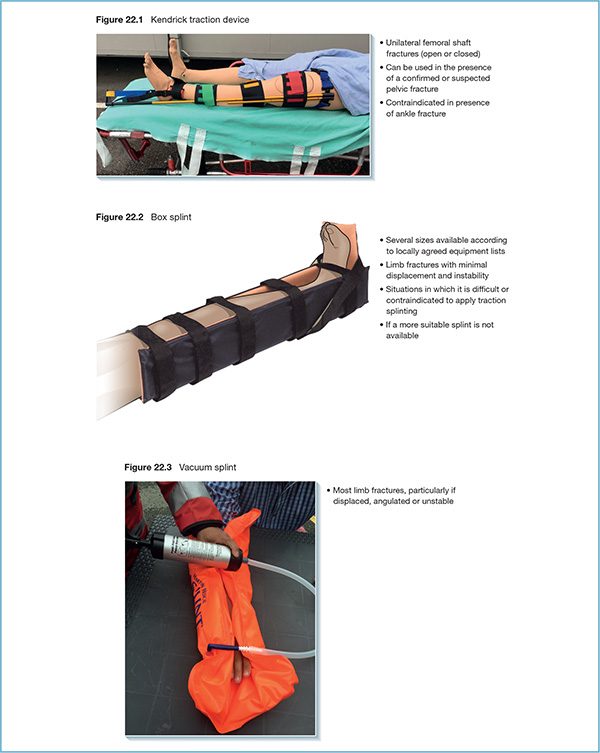22 Limb injuries are commonplace and range from minor sprains to traumatic amputations. Pre-hospital care practitioners should be prepared to treat the entire range of limb injuries whilst maintaining appropriate overall clinical priority. The ABCDE approach (see Chapter 21) should always be adopted as initial management. The exception to this is massive external haemorrhage where time spent performing assessment of airway and breathing would put the patient at risk of death from exsanguination. In this case, stop the haemorrhage first by progressing up the haemostatic ladder (see Chapter 11) and then transfer the patient urgently to the nearest trauma centre with an appropriate pre-alert message. Having addressed any life-threatening issues in the primary survey, the secondary survey should be carried out. Full exposure of the patient is important. This will allow for complete assessment of all four limbs for injury. Any abrasion or laceration may represent an open (compound) fracture. Any gross contamination should be washed away with normal saline. The wound should be dressed with sterile, saline-soaked, dressings. Tetanus injections are not given in the pre-hospital environment, and antibiotics may or may not be given depending on local pre-hospital protocols.
Limb injuries

Primary survey
Secondary survey
Wound care

Full access? Get Clinical Tree








